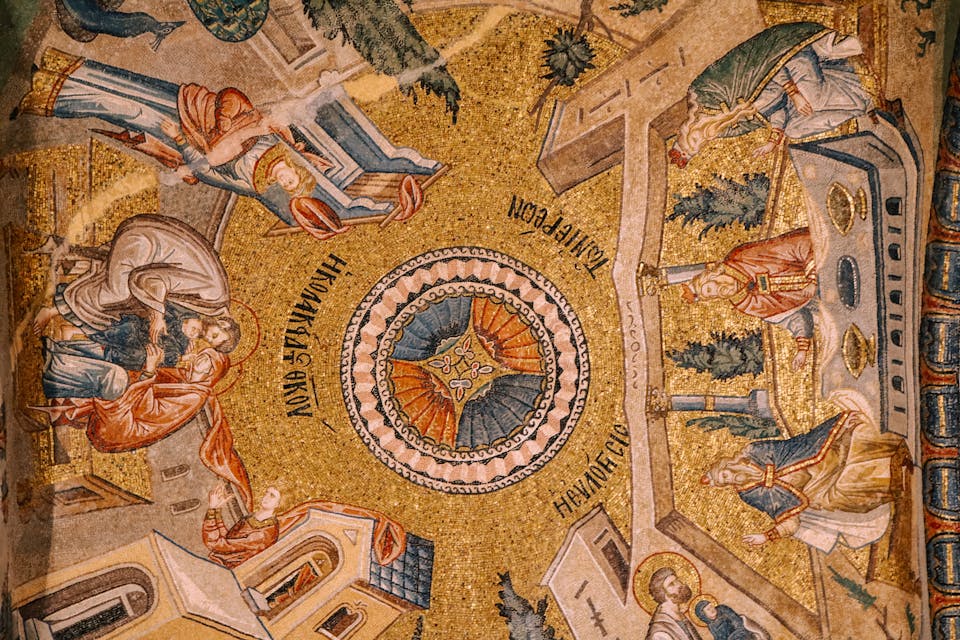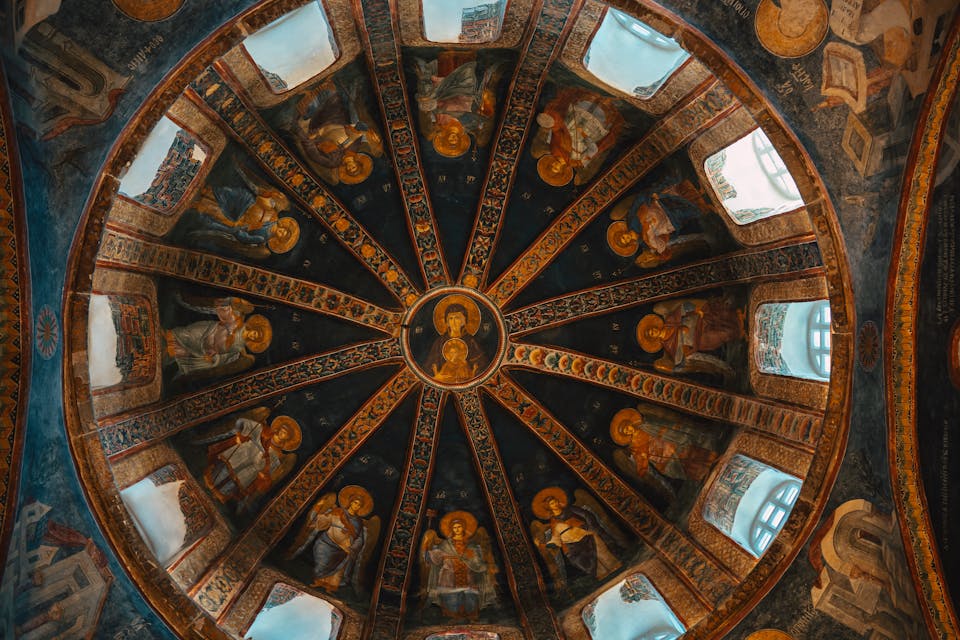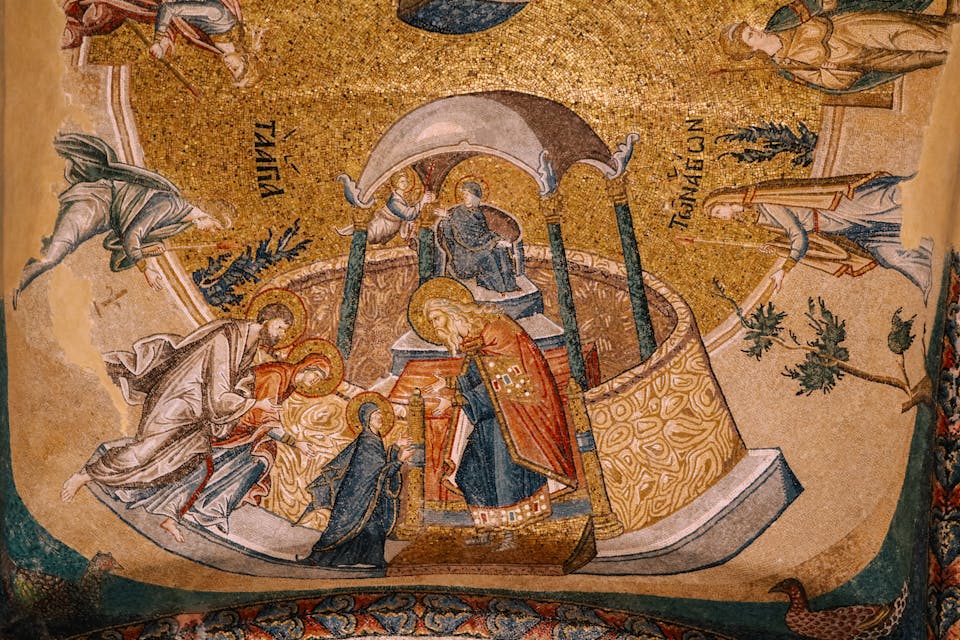Chora Church Istanbul
Table of Contents
-
What Is the Chora Church in Istanbul?
-
Why Should You Visit the Chora Church in Turkey?
-
What Makes the Chora Church Mosaics Unique?
-
How Can You Tour the Chora Church in Istanbul?
-
Why Is the Chora Church Also Known as the Kariye Museum?
-
How Does the Church of Chora Compare to Other Churches in Istanbul?
-
What Is the Role of the Chora Church in Istanbul's Religious History?
1. What Is the Chora Church in Istanbul?
The Chora Church in Istanbul, also known as the Church of St. Savior in Chora, is a medieval Byzantine Greek Orthodox church renowned for its stunning mosaics and frescoes. Located in the Edirnekapı neighborhood, this historic site dates back to the early 4th century. Originally built as a monastery complex outside the walls of Constantinople, the church was later incorporated into the city and underwent several renovations, the most notable of which occurred in the 11th century. The Chora Church is considered one of the most beautiful examples of Byzantine architecture and art, drawing visitors from around the world.
1.1. Architectural Highlights
The Chora Church features exquisite Byzantine architectural elements such as domes, arches, and columns. Its compact size and intricate design make it a marvel of medieval engineering.
1.2. Location and Accessibility
Situated in the historic Edirnekapı district, the Chora Church is easily accessible by public transport. Visitors can take a bus or tram to reach this iconic site.

2. Why Should You Visit the Chora Church in Turkey?
Visiting the Chora Church offers a unique glimpse into the rich history and artistic heritage of Byzantine Istanbul. The church's intricate mosaics and frescoes are among the finest in the world, depicting biblical scenes with remarkable detail and vivid colors. This historical site provides an intimate experience compared to larger and more crowded attractions in Istanbul. Whether you are an art enthusiast, history buff, or simply looking for a peaceful and awe-inspiring place to explore, the Chora Church is a must-visit destination in Turkey.
2.1. Art and Culture
The Chora Church is a treasure trove of Byzantine art. The detailed mosaics and frescoes offer insights into the artistic techniques and religious themes of the era.
2.2. Historical Significance
The church's long history, spanning from its early days as a monastery to its transformation into a mosque and then a museum, provides a fascinating look at the cultural and religious shifts in Istanbul.

3. What Makes the Chora Church Mosaics Unique?
The mosaics at the Chora Church are unparalleled in their beauty and craftsmanship. These artworks, created in the 14th century during the Byzantine Renaissance, showcase a sophisticated use of color and light to bring biblical stories to life. The mosaics depict scenes from the life of Jesus Christ and the Virgin Mary, as well as various saints and historical figures. What sets these mosaics apart is their intricate detail and the emotional depth captured in the expressions and movements of the figures. The use of gold tesserae adds a luminous quality, making the scenes appear almost three-dimensional.
3.1. Techniques and Materials
The mosaics were created using tiny pieces of colored glass, stone, and gold leaf, arranged meticulously to form stunning images. The artists' skillful use of shading and perspective creates a lifelike effect.
3.2. Iconography
The mosaics at the Chora Church are rich in iconography, depicting various biblical scenes and saints. Each mosaic tells a story, providing a visual representation of Christian theology.

4. How Can You Tour the Chora Church in Istanbul?
Touring the Chora Church in Istanbul can be a profoundly enriching experience. To make the most of your visit, consider the following tips:
4.1. Plan Your Visit
Check the opening hours and any special regulations. The church is usually open to visitors from Tuesday to Sunday. It is advisable to visit early in the day to avoid crowds.
4.2. Guided Tours
Joining a guided tour can provide deeper insights into the history and significance of the church’s art and architecture. Expert guides can explain the context and meaning behind the mosaics and frescoes.
4.3. Self-Guided Tour
If you prefer exploring at your own pace, audio guides and detailed brochures are available at the entrance. These resources offer valuable information about the church's history and art.
4.4. Photography
Don’t forget your camera, but be respectful of the space and other visitors. Flash photography may be restricted to preserve the delicate artworks.
4.5. Accessibility
The church is accessible to visitors with mobility challenges, but some areas might require assistance. There are ramps and elevators available to accommodate all visitors.

5. Why Is the Chora Church Also Known as the Kariye Museum?
The Chora Church is also known as the Kariye Museum because, after the Ottoman conquest of Constantinople, it was converted into a mosque in the early 16th century and renamed Kariye Camii. In 1948, it was secularized and turned into a museum to preserve its invaluable mosaics and frescoes. This transformation allowed for the restoration and public exhibition of the church’s Byzantine art, leading to its recognition as a cultural and historical monument. The name "Kariye" is derived from the Greek word "Chora," meaning "country" or "land," reflecting its original location outside the city walls.
The church's transformation from a Byzantine church to an Ottoman mosque and finally a museum reflects the dynamic history of Istanbul and its diverse cultural heritage.
5.2. Preservation Efforts
The conversion to a museum allowed for significant preservation efforts, ensuring that the stunning mosaics and frescoes could be appreciated by future generations.
6. How Does the Church of Chora Compare to Other Churches in Istanbul?
The Church of Chora stands out among Istanbul's numerous historic churches for several reasons:
6.1. Artistic Significance
The church boasts some of the best-preserved Byzantine mosaics and frescoes, which are often considered superior to those in other churches in terms of detail and artistry.
6.2. Historical Layers
Unlike many other churches, the Chora Church reflects various historical phases from its original construction in the 4th century through its renovations in the 11th and 14th centuries.
6.3. Intimate Setting
The Chora Church offers a more intimate and serene experience compared to larger sites like the Hagia Sophia and Hagia Irene.
6.4. Cultural Fusion
Its transformation from a church to a mosque and then a museum highlights the cultural and religious evolution of Istanbul over the centuries.
7. What Is the Role of the Chora Church in Istanbul's Religious History?
The Chora Church plays a significant role in Istanbul's religious history. Initially serving as a monastery church, it was a center of Byzantine religious life and scholarship. Its rich decorative program reflects the theological and artistic advancements of the Byzantine Renaissance. After the Ottoman conquest, its conversion into a mosque symbolizes the city’s shift from Byzantine Christianity to Ottoman Islam. Today, as a museum, it stands as a testament to the city’s layered religious and cultural heritage, bridging the past and present and offering insight into the spiritual and artistic life of medieval Byzantium.
7.1. Monastic Heritage
The Chora Church’s origins as a monastic complex highlight its importance as a center of religious and scholarly activity in Byzantine times.
7.2. Ottoman Influence
The church's conversion to a mosque and subsequent changes reflect the Ottoman Empire's influence on the city’s architectural and cultural landscape.
7.3. Modern-Day Museum
As a museum, the Chora Church preserves and showcases its rich artistic and historical heritage, providing visitors with a unique window into Istanbul’s past.